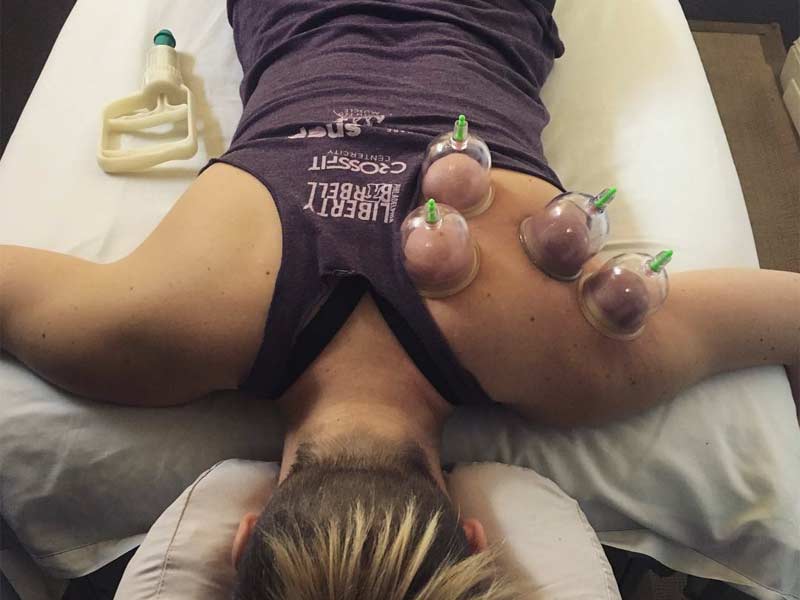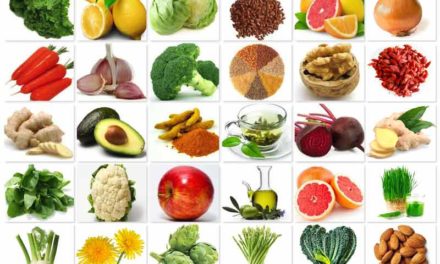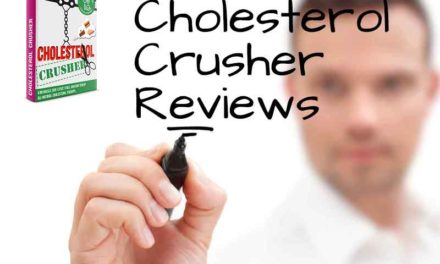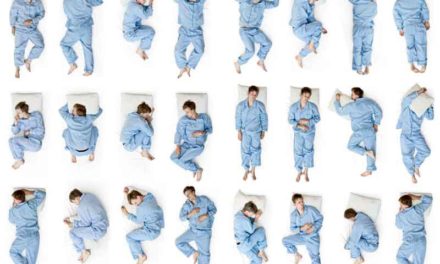Cupping therapy is a form of alternative medicine that dates back to ancient Egyptian, Middle Eastern and Chinese cultures as early as 1,550 B.C. It was very popular with the royals and the elite for treating various ailments. Cupping was brought back in the media spotlight this summer when several Olympic athletes like 24-time Olympic gold-medal winner Michael Phelps had large red circles on their backs at the 2016 Olympic Games in Rio. And they weren’t the result of a fierce paintball game, cigarette burn or love-making session. Cupping has been endorsed by quite a few celebrities, including Gwyneth Paltrow and Jennifer Anniston. Westerners are showing an increased interest in this ancient practice as an alternative to treating the symptoms of various conditions naturally and drug-free. You might think: it looks painful, why do it? Here’s why.
What is cupping therapy?
Cupping therapy uses suction to help with pain, back problems, blood flow, detoxification, relaxation and other general ailments. An inflammable substance such as paper or a cotton ball soaked in alcohol is set on fire in a cup and as the fire goes out, glass cups are placed on the desired area upside down for around 3 minutes for a first session. Cups can be put in any area, but the preferred one is the back. Suction is created when the air trapped between the heated glass and the skin begins to cool. A cup-shaped mark appears when small blood vessels under the skin break as a result of the suction. The skin should go back to normal in around 10 days to a couple of weeks.
Most recently, the inflammable substance has been replaced with a rubber pump that creates suction. The cups can also be heated in hot water or oil or with a torch. Cups come in different materials, shapes and sizes, depending on the condition they treat and the area they are applied to. Cups can be made of various materials, such as glass, heat-resistant plastic or rubber or silicone. Historically, cups were made from bamboo, horns, or pots.
Types of cupping therapy
Dry cupping, also called fixed cupping, is the most traditional technique. It consists of applying heated suction cups on the back by using fire to provide a vacuum.
As opposed to fixed cupping, moving cupping involves applying massage oil to move the cups around to different areas.
Wet cupping therapy or bleeding cupping or Hijama in Arabic as it is sometimes called, as opposed to dry cupping therapy, is a common practice in the Middle East. It should not be confused with moving cupping because of the presence of oil in the latter. Wet cupping involves making tiny cuts on the skin and applying several cups on the same spot to draw out a small quantity of blood. A pump can also be used to draw out a bit of blood. This is thought to help eliminate toxins from the body and encourage healing.
Sometimes, cupping is combined with acupuncture, where needless are inserted first before placing the cups on the skin. In traditional Chinese medicine, cupping is used in conjunction with other nutrition recommendations as part of a comprehensive health check, while in the U.S. it is more of a one-off therapy. According to Chinese beliefs, cupping can impact the flow of energy or ‘qi’ through the body, while Western practitioners focus more on its effect on muscles or blood flow.
Cupping therapy vs acupuncture
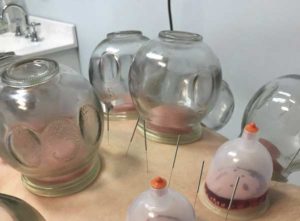 Both cupping therapy and acupuncture are part of the traditional Chinese medicine and promote a healthy flow of energy or ‘qi’, of blood and lymph and target inflamed areas. The stagnation of energy, blood or lymph is believed to bring on diseases, so by freeing this flow, these two alternative practices are thought to treat some conditions.
Both cupping therapy and acupuncture are part of the traditional Chinese medicine and promote a healthy flow of energy or ‘qi’, of blood and lymph and target inflamed areas. The stagnation of energy, blood or lymph is believed to bring on diseases, so by freeing this flow, these two alternative practices are thought to treat some conditions.
The main difference is that acupuncture uses unique extremely thin needles that penetrate through the skin while cupping works at the surface of the skin by applying suction cups. Cupping can be both wet and dry, while acupuncture is only dry.
Cupping and acupuncture are often used together by inserting a needle into the skin and then covering it up with a cup. Both are thought to fight various diseases, help relaxes and distress and boost energy. Both practices follow the lines of energy meridians.
Benefits of Cupping
The International Cupping Therapy Association (ICTA) organizes several certification workshops around the world and has a database of therapists where you can locate the closest to you in certain preferred locations. ICTA recommends cupping for a long list of conditions, including influenza, headaches, arthritis, hemorrhoids, rheumatism, hypertension, stroke, asthma, gynecological disorders, gastrointestinal disorders, depression, chronic fatigue, anxiety, insomnia, cellulite, wrinkles, varicose veins, muscle and bone conditions, vertigo or menopause symptoms.
The list of contraindications includes severe diseases such as cardiac failure, renal failure, or hemorrhagic diseases like leukemia, cancer, hernia, herpes, shingles and outbreaks of various skin conditions like allergic dermatitis or psoriasis.
The British Cupping Association (BCS), the regulating body of the profession in the UK, recommends cupping for respiratory infections; joint pain caused by arthritis; blood disorders, such as anemia and haemophilia; migraine and headaches; muscle aches and stiffness; fertility and gynecological disorders; skin problems such as acne, herpes and eczema; hypertension; mental illness, anxiety and depression; food allergies and asthma; varicose veins and cellulite.
The side effects include burns, bruises and even skin infections. Make sure you speak to your doctor before trying it.
-
Relieve Muscle and Joint Pain
One of the top reasons why cupping is used and why it is increasingly popular with high-performance athletes is to relieve muscle and joint pain without having to take any medication. A report published in Evidence-Based Complementary and Alternative Medicine found that cupping was increasingly more effective in reducing low back pain compared to other care treatments, in relieving cancer-associated pain compared with anticancer drugs and analgesics, and helped treat pain resulting from respiratory issues.
Some athletes often resort to alternative medicine to ease stiffness, reduce muscle cramps, joint pain and other exercise-induced injuries. Pressure, suction and heat and sometimes needless are applied around the painful spot, which streamlines the flow of energy. Improved blood circulation ensures tissues receive all the oxygen and potent nutrients they need. Muscles are gradually relaxed and this reduces the stiffness caused by rheumatism, fatigue or chronic neck and back pains.
-
Body and Mind Relaxation
Cupping not only acts like a deep-tissue massage that relieves muscle and joint pain and stiffness, but it also relaxes the mind. It alleviates the negative effects of a stressful life always on the run. Just sitting still, lying down, taking some time for yourself and receiving some tender loving care destresses the mind and is thought to protect against anxiety and depression.
-
Colds and Respiratory Infections
Cupping helps boost the immune system by encouraging the free flow of energy, blood and lymphatic fluid to inflamed areas of the body and by helping eliminate toxins from the body. Cupping is thus thought to help in the treatment of respiratory illnesses like the flu or colds, help clear away phlegm or congestion, infections, allergies, and asthma. One of the oldest uses of cupping, even before any medication was available, was treating respiratory conditions like pulmonary tuberculosis
-
Digestive Disorders
Stress is thought to account for many digestive disorders. Since cupping helps destress, it can improve digestion and alleviate the symptoms of disorders such as irritable bowel syndrome (IBS), stomach pains, gastritis or diarrhea. To treat these conditions, cups are usually placed around the navel or the kidneys and over the bladder or the stomach.
-
Skin
Cupping is thought to reduce wrinkles, acne, cellulite, and skin inflammation. It is increasingly popular with celebrities who want to have a toned skin, although studies haven’t shown it can necessarily have this effect. As it improves blood flow, it is believed to tone the skin. Oil is often applied to the skin before the cups are laid down, which can moisturize and make your skin brighter.
Acne is usually treated with antibiotics, but because cupping improves blood flow and might have anti-inflammatory properties, some studies have found it to be just as effective, if not more useful, like antibiotics. A review of six studies showed that wet cupping yielded better results than antibiotics such as tetracycline, ketoconazole, or tanshinone.
Cupping marks controversy
Many people do not even consider cupping therapy because of the image of those large red marks which sticks to their brain and the pain they associate with them. The ICTA insists that this reaction is due to cultural reasons, as well as ignorance or better said, lack of education. Some cultures are not as sensitive to these marks and these marks are not an issue compared to the tremendous detoxifying benefits they bring. The ICTA argues that Westerner culture, on the other hand, is an image-conscious society, with a heightened sensitivity to domestic abuse. Those unfamiliar to cupping therapy believe the marks are bruises and this has a significant negative impact especially that in North American society bruising is considered an injury. People are not informed what exactly caused the red marks. The discolorations caused by cupping are often misinterpreted as painful physical damage rather than the release of debilitating agents that reach the surface.
ICTA explains that when injuries occur deep in the muscle, there is bleeding and blood stagnation in the form of deep bruises. This leads to pain and chronic conditions. What cupping does by the vacuum effect it creates is drawing the old stagnant blood and sticky fluids from the injury area, bringing them up to the surface and restoring healthy circulation that brings oxygen, living cells and nutrients to the affected area for faster recovery.
Marks appear where there is cellular debris, static blood, pathogenic factors, or high levels of toxins in the body. They indicate that the body is on its way to speedy recovery after all these debilitating agents have been removed from the deep tissue.
The ICTA notes that not all people react the same to cupping therapy and have the same level of bruising. The belief that the marks occur all the time is a conception. The color, pattern and duration of the marks range from a bright red to dark purple and they usually last from 3 days to a week or longer depending on the severity of the condition or the person’s daily level of physical activity. If there is no stagnated blood or toxins present, the pink mark will disappear in a few minutes, up to a couple of hours. If the person undergoing cupping therapy sweats a lot every day, no marks may even occur. People exposed to toxic environments may have huge mark each time.
The ICTA insists that it is vital to educate the public about the nature of the discoloration, the therapeutic value of drawing these toxic agents out of the body and the overall health benefits and encouraging patients in relaying accurate information to others.
Cupping Safety
It’s okay to wonder whether this practice is safe, especially after hearing that it involves breaking capillaries or drawing blood and after seeing these huge marks it leaves on the body. Most practitioners are certified and adhere to strict hygiene norms. They use sterile equipment. Moreover, as its popularity increases, cupping starts to be regulated by bodies like the ICTA or the BCS in the UK. These bodies also help you find well-trained practitioners who adhere to safety guidelines, such as not reusing the cups or not using cups made of animal horns. There are no guidelines governing cupping in the United States. Most practitioners have backgrounds in massage or other alternative medicine practice.
In California, wet cupping and other forms of bloodletting are illegal.
Cupping is not recommended for pregnant women, people with skin sensitivity or bleeding disorders.
Scientific Evidence
There are very few studies on cupping and most of them are inconclusive. A study published in PLoS One in 2012 examined 135 trials of cupping therapy from 1992 to 2010. The Australian and Chinese researchers concluded that cupping has potential effect in the treatment of herpes zoster, cervical spondylosis, acne or facial paralysis when used in combination with acupuncture of other medication, but ‘further rigorously designed trials on its use for other conditions are warranted.’
Another review carried out in 2014 of 16 studies involving 921 people reported short-term pain reduction.
A more recent report was published in 2015 in the Journal of Traditional and Complementary Medicine and suggests that cupping therapy could help with herpes zoster, acne, and pain management.
However, modern science has not been able to confirm the claimed benefits other than maybe a placebo effect. The way the placebo effect works is that when participants are told that they took a particular substance, they immediately start feeling the consequences of that particular substance, even though they, in fact, took a dummy pill. Many people experience chronic conditions and have run out of all the traditional cures so going for an alternative treatment seems the way forward.
Some specialists argue that cupping therapy has been around for thousands of years so we cannot undermine or deny its health benefits. Moreover, it’s a natural drug-free solution when we take enough medicines as it is. Others, on the other hand, stress the fact that this therapy might have been highly efficient in a time when there was no medication available, but modern science now provides better options whose results have been clinically proven by some studies. Either way, cupping therapy is not meant to replace entirely medication prescribed for severe conditions.
References:

